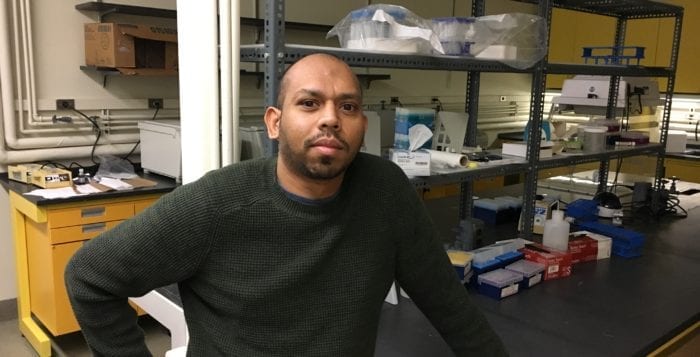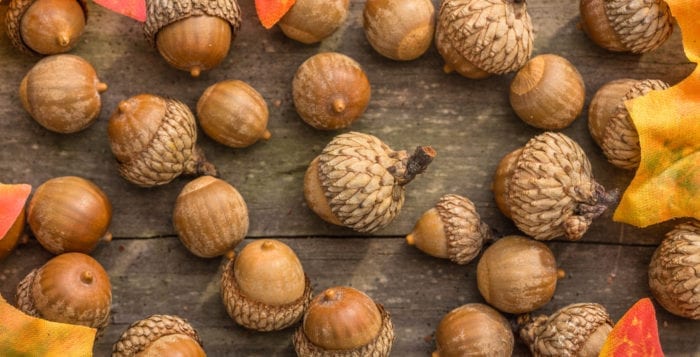By Daniel Dunaief
People have left all kinds of signs about their lives from hundreds and even thousands of years ago. In addition to artifacts that provide raw material for archeologists, anthropologists and historians, they also left something modern science can explore: their genes.
Genetic information locked inside their bones can add to the dialogue by providing details about what regions people might have come from and when they arrived. A group that includes Krishna Veeramah, an assistant professor of primate genomics at Stony Brook University, is using genetic information, combined with archeological evidence, to gain a better understanding of the events in Europe immediately after the fall of the Roman Empire, between the fifth and sixth centuries.
“We want to test questions that integrate historical and biological information,” said Veeramah, who is working with a multinational team of scientists. “We want to integrate archeological information.”
This is a time period in which there is some disagreement among historians about what happened after the fall of the Roman Empire. Patrick Geary, the principal investigator on a project that traces early medieval population movements through genomic research, said that this period fundamentally changed not only the demographic makeup of the populations but also the social and political constellation of Europe. These scientists are hoping to contribute their analysis of the genetic material of 1,200 people from several cemeteries to a discussion of the history of the continent.
So, how does this work? Paleogenomic data offers information from hundreds of thousands to millions of positions along the genome, which are called markers or single-nucleotide polymorphisms. Looking at the markers in total, researchers can identify small but systematic genetic differences between groups. They hope to determine where an individual’s ancestors are from based on the bones they are studying. They can only come to these conclusions, Veeramah explained, once they have sampled large numbers of people from different geographic areas during that time period. The genetic differences he is seeing are extremely small. He uses enormous pools of data that can allow him to explore subtle patterns, which emerge at the group level.
While the notion of using the genetic code to contribute information to discussions about the movement of groups of people has its proponents and practitioners, Geary and Veeramah recognize the skepticism, alarm and misdirection that comes from exploring subtle genetic differences among various groups of people. “The application of genetics to the human past is dark,” Geary said, pointing to eugenics discussions. “That’s understandable. We are emphatically opposed to such previous misuses of genetic research.” Some scientists, Geary said, are also suggesting that genetic studies will replace manuscripts or other clues. “We need all types of information,” Geary said.
Indeed, in a cemetery in Hungary that contained about 45 graves, Veeramah is studying genetic differences between two graves that are oriented in another direction from the other adult-sized graves. These two graves don’t contain any grave goods and appear to have different construction. The initial genomic analysis of a subset of individuals suggest they have a genetic profile that is different from other members of the cemetery and may show more of a connection to modern people from southern Europe rather than northern and central Europe, like the rest of the samples. The way these two graves were arranged offers intriguing possibilities, Veeramah said. This may suggest that these individuals had a distinct biological identity, which could impact some aspects of their social identity. To reach any conclusions, he hopes to collect more data from more individuals.
Geary suggested the kind of work he and Veeramah are doing, along with partners in other countries, will offer insight into the different paths of men and women. When paleogenomics first arrived as a discipline, historians were slow to embrace it. At the 2008 American Historical Association’s annual meeting, Geary gave a talk at which about 10 people attended. In January, at the 2017 American Historical Association meeting in Denver, Veeramah will discuss how a study of the Lombards offers a framework for integrating history, archeology and genomics. The president of the American Historical Association invited Veeramah and has publicized the talk as a presidential panel.
“I do believe that paleogenomics has become an important aspect of archeological work, and that the newly developed procedures for sequencing and analyzing genetic material adds a whole new dimension to work on archeological sites,” Patrick Manning, the president of the AHA and a professor of world history at the University of Pittsburgh, wrote in an email. Veeramah’s “work on the Lombards addresses an important issue in the Germanic migrations throughout Europe, long debated and now with important new information.”
Veeramah arrived at Stony Brook University in 2014 and lives in Sound Beach. He grew up outside London in Dartford and attended the same secondary school as Mick Jagger. While he likes some of the Rolling Stones songs, he’s more of a Dizzee Rascal fan. Veeramah plans to have a lab installed by next summer, when he hopes to analyze bones from archeological sites shipped from Europe.
In the meantime, he will continue to analyze genetic information coming from partners in Europe. While Veeramah and others in the field have published papers in prestigious journals like the Proceedings of the National Academy of Sciences and Science, they have struggled to receive funding from American funding agencies at the same level as their European counterparts.
“It is somewhat surprising how far behind the U.S. has gotten in this area,” Veeramah said. European grants can be more adaptable and can put more value on multidisciplinary work. “This is a systematic issue for U.S. funding. I hope it will be addressed soon.”




 The National Association of Boards of Pharmacy (NABP) estimates that a large percentage of internet pharmacies are not in compliance with federal and state laws, or NABP safety and pharmacy practice standards. Some carry outdated, counterfeit, mislabeled or incorrect drug dosages. Others buy in such bulk (in order to offer discounted prices) that they are not able to store medications in appropriate environments. Rather, they are stored in conditions that are too hot, cold or humid. Many illegal online pharmacies can also put us at risk for credit card fraud or identity theft.
The National Association of Boards of Pharmacy (NABP) estimates that a large percentage of internet pharmacies are not in compliance with federal and state laws, or NABP safety and pharmacy practice standards. Some carry outdated, counterfeit, mislabeled or incorrect drug dosages. Others buy in such bulk (in order to offer discounted prices) that they are not able to store medications in appropriate environments. Rather, they are stored in conditions that are too hot, cold or humid. Many illegal online pharmacies can also put us at risk for credit card fraud or identity theft.














